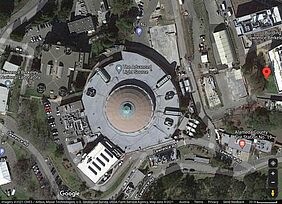In the future of our industrialised world, electricity demand is projected to increase more than tenfold within the next 10 years. This means that society is going to need better battery storage systems with a larger storage capacity. By far the greatest concern in this matter is that the supply of the main raw materials, cobalt and nickel, will not suffice to satisfy future demands.
Now (2021), scientists at Berkeley Lab have successfully developed battery cathodes with the help of a new class of materials that have the same or even higher energy density than the materials in conventional lithium-ion batteries but are fairly inexpensive and abundant. The material is called DRX (disordered rock salts with excess lithium) and was discovered some 10 years ago. This material has the advantage of enabling cathodes to be made without nickel or cobalt.
In DRX cathodes almost any metal in place of nickel and cobalt can be used. The scientists have concentrated their research efforts on manganese and titanium, which are both more abundant and cheaper than nickel and cobalt. At first, the charge rate of these materials was extremely low, and their stability was also poor, but both issues could be solved through modelling and experimentation, using, for example, fluorination to improve stability. Also, since DRX can be synthesised with many different elements, the researchers have looked at which elements would be most suitable and could strike the right balance between being abundant, cheap, and having good performance.
During the experiments the scientists found that fluorination strongly reduced structural amorphization and void formation on the particle surface and could therefore improve the cyclability of the cathode. By means of a novel rock salt-to-spinel-like structural transformation in the DRX bulk a gradual capacity increase during cycling was achieved.
Research at Berkeley on DRX started in 2014, where the scientists discovered that a cathode having a disordered atomic structure could incorporate more lithium and thus produce more energy while enabling a wider range of elements to be used as transition metal. They also learned that within a disordered structure, it was easy for lithium ions to move around freely.
In 2018, the researchers at Berkeley received funding from the Vehicle Technologies Office in DOE’s Office of Energy Efficiency and Renewable Energy to support their studies on DRX materials and possibly gain new insights into their behaviour. Together with scientists at Oak Ridge National Laboratory, Pacific Northwest National Laboratory, and UC Santa Barbara, the scientists were able to achieve great progress in optimising the DRX cathodes of lithium-ion batteries. The results of these studies were published in a scientific journal in 2019 and showed that lithium transition metal oxides with a cation-disordered rock salt-type structure had very high specific capacities and energy densities up to 1000 W h kg1, which were much better than commercially-available layered lithium transition metal oxide cathodes.
The advantages of the new materials are numerous: DRX can be designed with many different elements. Also, a cathode having a disordered atomic structure can accommodate more lithium and accordingly be more energy-efficient as well as use a broader variety of elements as the transition metal. The research also proved that within a disordered structure, lithium ions could move around more freely.
The next step of the research will be to address the remaining issues, including improving the life cycle so that the number of times the battery can be recharged over its lifespan increases significantly and optimizing the electrolyte, which is the chemical medium that enables the flow of electrical charge between the cathode and anode. The scientists may even get support from other institutions in Europe and Japan which have also launched DRX research programs.
